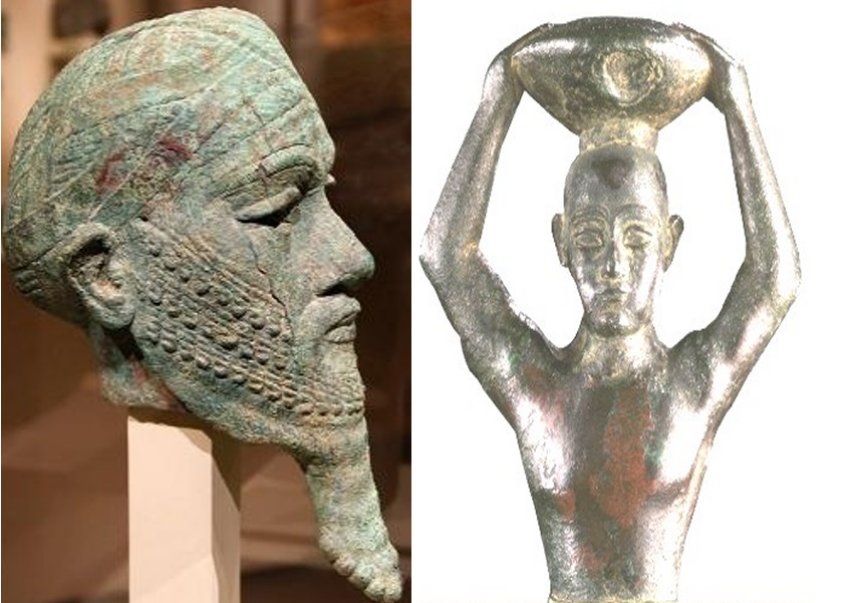A. Sutherland - AncientPages.com - King Ur-Nammu reigned in 2047-2030 BC and founded the Third Dynasty of Ur in Sumer. He initiated the so-called Ur III Period (2047-1750 BC), also known as the Sumerian Renaissance.
Bust of King Ur-Nammu. Credit: Metropolitan Museum of Art; Right: The object on his head (image to the left) represents a basket of Earth. Image source
King Ur-Nammu - king of Ur and king of Sumer and Akkad - was the one who built the temple of God Enlil.
The object on his head (image to the left) represents a basket of Earth. It has a symbolic meaning of carrying material to build the temple. Sumerians 'kept' the ancient African custom of carrying heavy loads on their heads.
He called himself the brother of Gilgamesh and is widely remembered for his legal code, the Code of Ur-Nammu, the oldest known surviving example in the world. His laws, known as the laws of Ur-Namma (or Code of Ur-Nammu ca. 2112-2095 BC) represent the first full set of written codes found, and it is the oldest surviving tablet containing a law code that was written circa 2100 BC.
Ur-Nammu proved to be a good politician. He understands the current situation of his country, which was not the same as two hundred years ago when it lost its independence, conquered by the Assyrian king Sargon the Great.
Ur-Nammu is also credited as the builder of the Great Ziggurat of Ur, which still rises above the city's ruins in the modern-day.
He is best known as the king who composed the first complete law code in the world, 'The Code of Ur-Nammu' - the Oldest Law Book.
An earlier law code (known as the Code of Urukagina from the 24th century BC) is only known through partial references. So, since the actual text itself has not been found, Ur-Nammu’s code is considered the oldest extant.
However, according to certain claims, it could actually have been his son Shulgi who ordered the laws to be written down after his father’s death in battle.
Written by – A. Sutherland - AncientPages.com Senior Staff Writer
Updated on February 27, 2023
Copyright © AncientPages.com All rights reserved. This material may not be published, broadcast, rewritten or redistributed in whole or part without the express written permission of AncientPages.com







